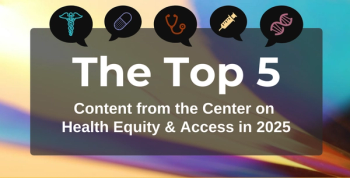
Latest News in Parkinson Disease: Tracking Progression via Machine Learning, Diagnostic PET Imaging, and More
An overview of the latest news in Parkinson disease reported across MJH Life Sciences™.
An overview of the latest news in
Machine Learning Model Identifies States of PD Symptom Progression
In recently published data from researchers of the Michael J. Fox Foundation and IBM, a newly developed statistical progression model was found to identify 8 states of PD and categorize patients according to motor/nonmotor symptoms and disease progression.
As reported by
In assessing the indexed states, ranging from stage 1 (mild) to stage 8 (terminal), multiple points of alignment were found between the model and clinical observations for patients assigned to each state. The model also accounted for the effects of PD medications, a feature that has been explored in a limited fashion or not at all in prior models.
PET Imaging Tracer May Improve Diagnosis of PD
Reported by
Leveraging a-syn, a protein suggested to have a central role in the pathogenesis of PD, the tool showed target engagement via high-resolution autoradiography across multiple alpha synucleinopathies, including PD, multiple system atrophy, and dementia with Lewy bodies. AC Immune, who presented the data, noted that it plans to further assess the imaging tracer in a first-in-human clinical trial.
The company also announced at the AAIC meeting their acquisition of a vaccine that would target a-syn, called Affiris PD01, which will be clinically developed and evaluated in a biomarker-based phase 2 study of patients with PD.
Integrating Novel Technology in Management of Advanced PD
In a Peer Exchange series by
Discussing the use of
Even for patients who had undergone DBS previously, it was noted that levodopa absorption can falter over time. In personalizing treatment approaches for patients with advanced PD, ensuring that levodopa is getting absorbed could prove effective in managing symptoms like freezing of gait and postural instability that DBS would only slightly help or even make worse.
Newsletter
Stay ahead of policy, cost, and value—subscribe to AJMC for expert insights at the intersection of clinical care and health economics.








































